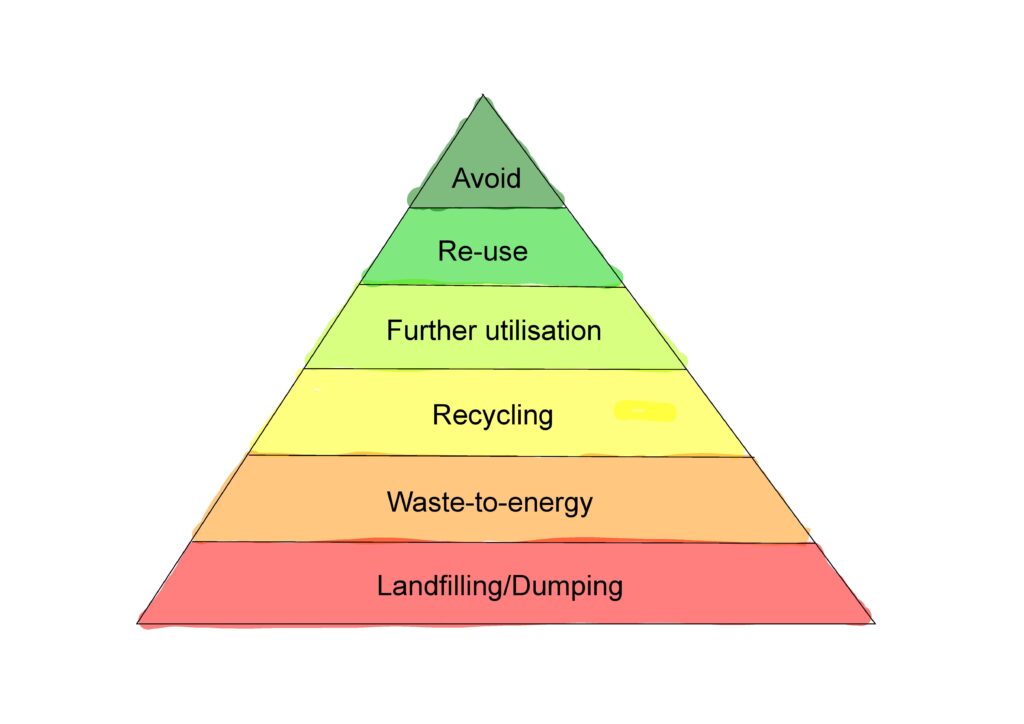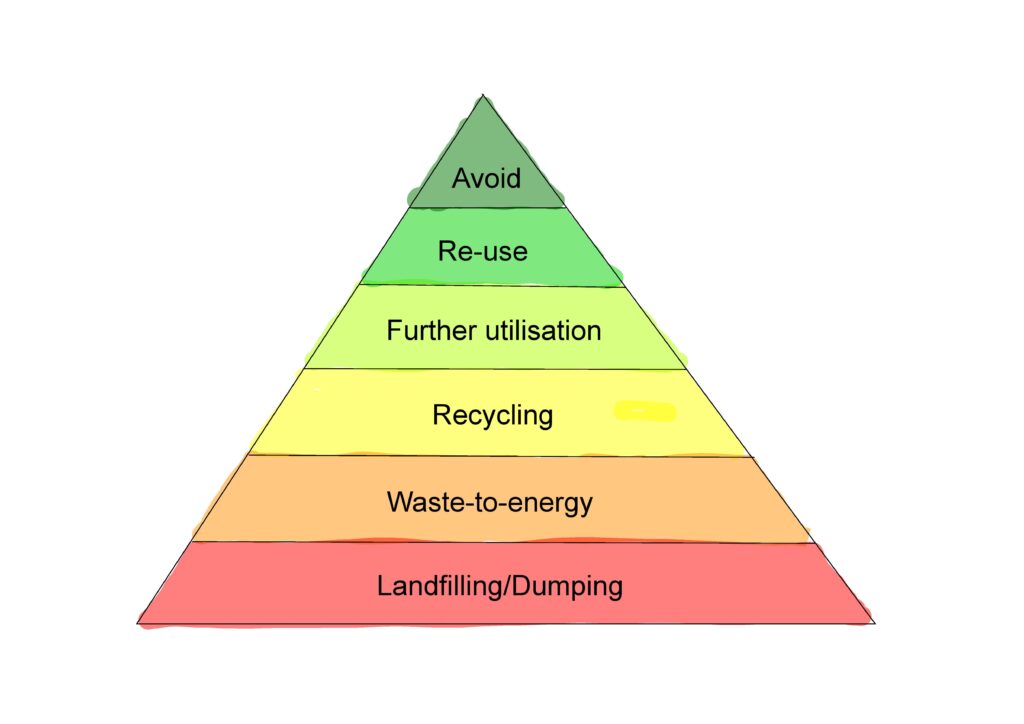The pyramid of waste

For a general understanding of the circular economy and why concepts such as Cradle to Cradle are necessary at all, we will look at the waste pyramid in this article. This shows the hierarchy of concepts for reducing waste. The higher up, the more efficient is the use of raw materials, as they can be used longer or recovered more easily. Concepts further down the pyramid generate more waste per unit of benefit and therefore increase costs and pollution.
Table of Contents

Landfilling and dumping
Landfilling, for example, is already prohibited by law for many types of waste (e.g. indifferentiated and organic waste) in Germany, for example, due to its harmfulness. Landfilling involves putting the waste onto an area that is isolated from the groundwater so that the harmful escaping liquids cannot contaminate the environment. In addition, the gases that are produced (e.g. methane, a highly potent greenhouse gas) are captured and burned to produce carbon dioxide (CO2). Only so-called “(waste-)dumps”, which have no environmental protection measures and thus account for a significant part of global greenhouse gas emissions, represent a worse waste disposal concept. However, dumping is banned in the EU. Nevertheless, it is a major problem worldwide.
Waste-to-energy
Waste-to-energy is a description for waste incineration with energy recovery. In the process, the raw materials are lost, but electrical and thermal energy can be recovered from the waste. However, in order to achieve optimal incineration temperatures, natural gas is usually burned in addition. A waste incineration plant usually has a large CO2 emission, of which, however, a part comes from regenerative sources (e.g. organic waste) (these were previously extracted from the atmosphere by the plants). Thus, thermal recycling is a form of use that creates value but stands in the way of an effective circular economy.
Recycling
Recycling is the most “primitive” form of the circular economy of raw materials. In recycling processes, a certain raw material is sorted out of the waste and processed in specialised plants so that in the end raw materials are available again that are suitable for the next use. However, raw materials that have been too heavily contaminated during production or use are lost in the process, as recycling may not be economically or energetically viable. The energy input for this process is comparatively high, which is why other raw material recycling processes should be preferred.
Further utilisation
Further utilisation is better than traditional recycling. Here, waste is converted directly into other products. This process consumes less energy than a recycling step followed by the production of a new material. In the case of further utilisation, a change in shape is usually carried out. This means that, for example, when paper waste is too short in fibre length or has other quality defects for use in the same purpose it is used for the production of toilet paper, since this leaves the cycle after use anyway.
Re-use
Reuse refers to process steps in which a large proportion of the components can be used again. Concrete processes are called “refurbishing” and “remanufacturing”, whereby “remanufacturing” is based on a complete overhaul of the product and thus involves more effort. In the case of “refurbishing”, only faults that are defective or impair the experience of use are eliminated.
Avoid
The top of the waste pyramid is the avoidance, which is sometimes not even noted in the waste pyramid. This is because steps of reuse/recycling are avoided through maintenance and repairs as well as durable construction. However, since the quantitative reduction of waste generation is an important aspect of permanent raw material security, I have additionally listed the avoidance.

